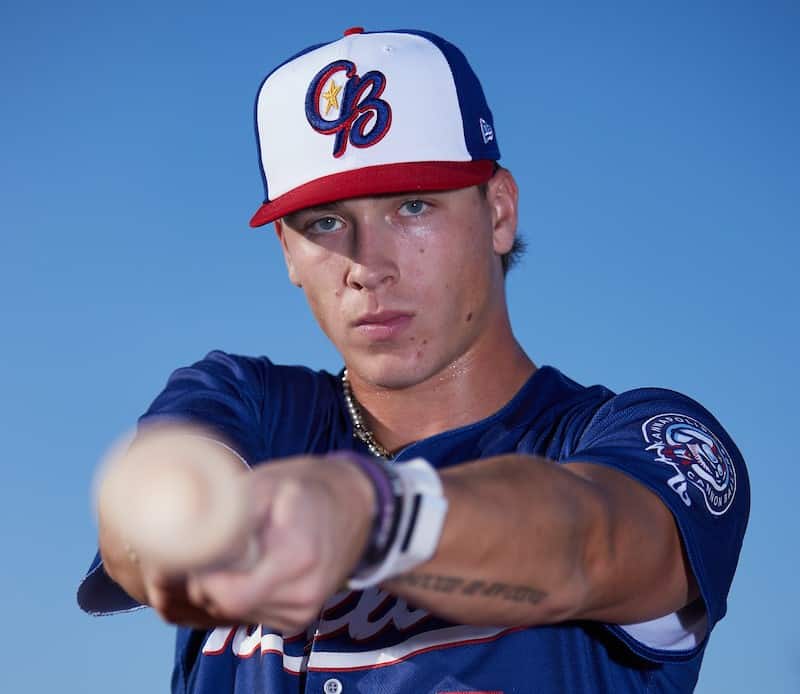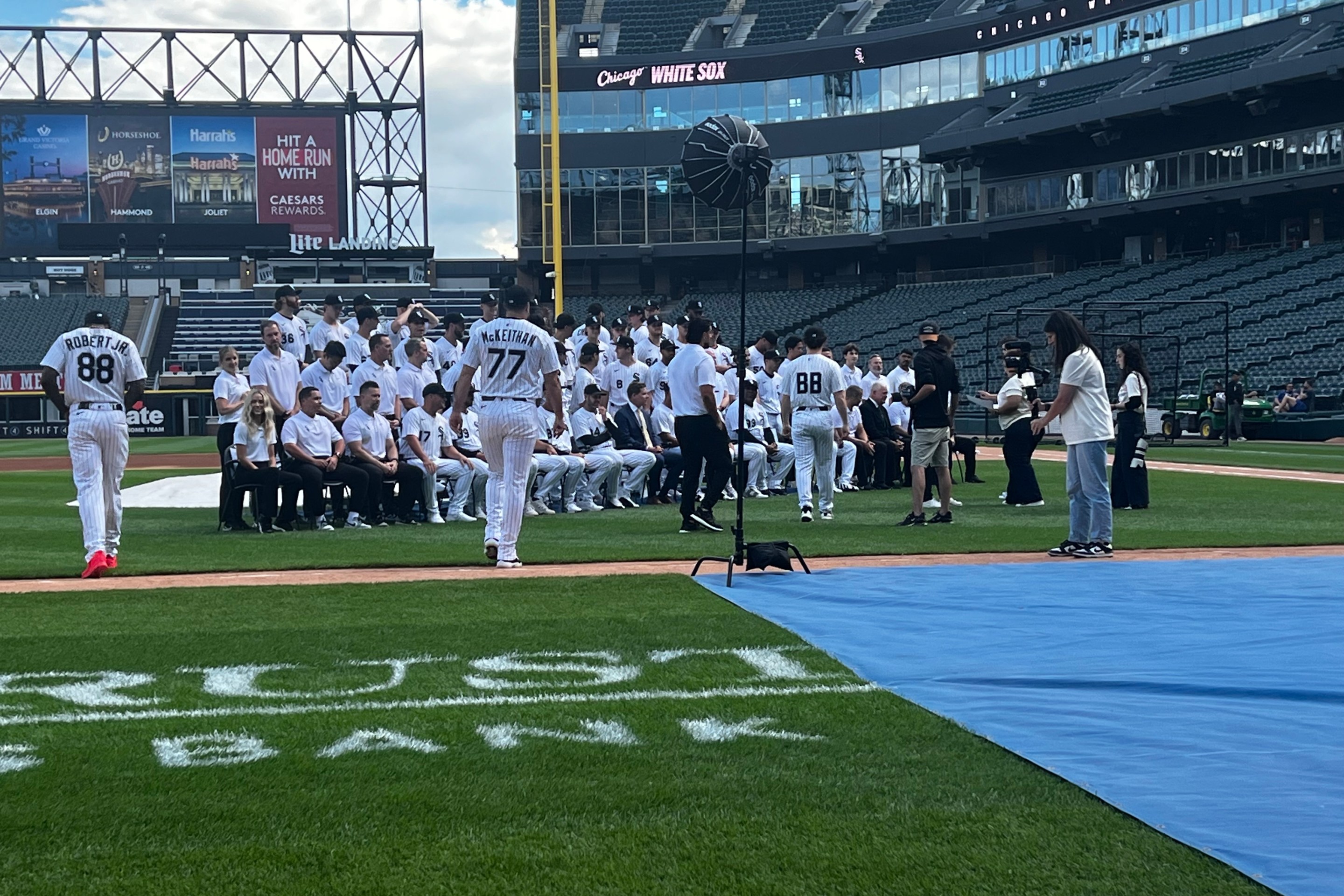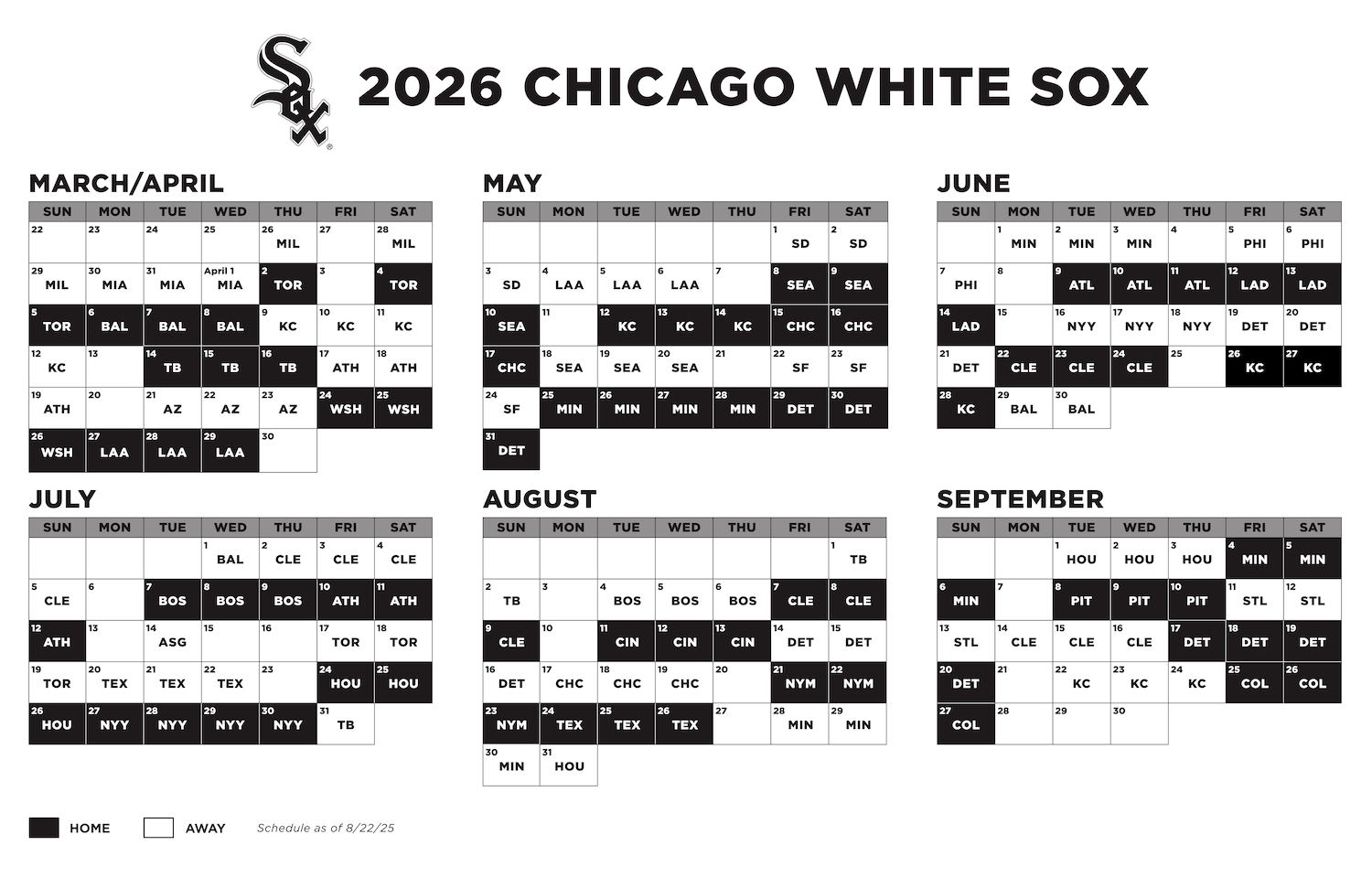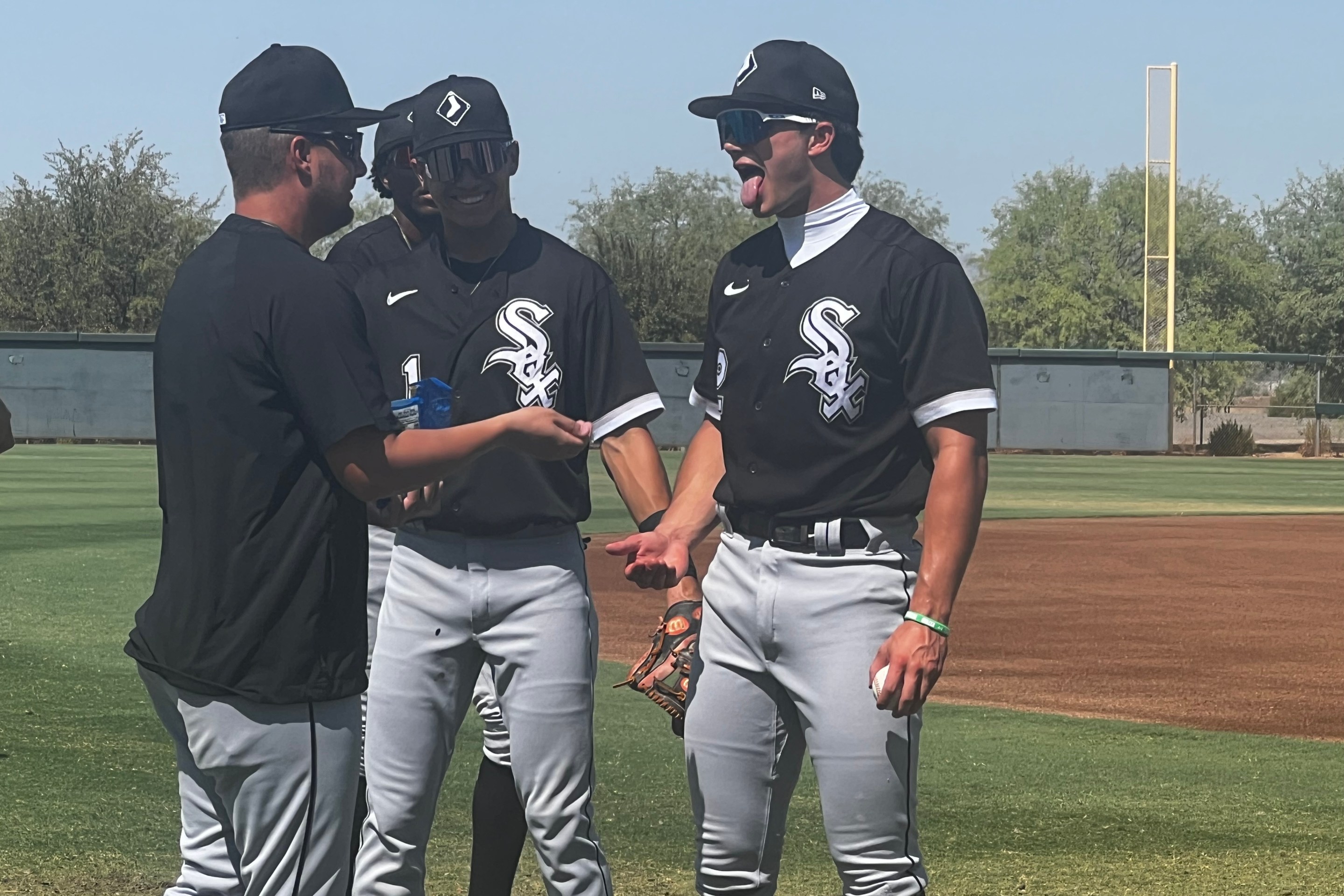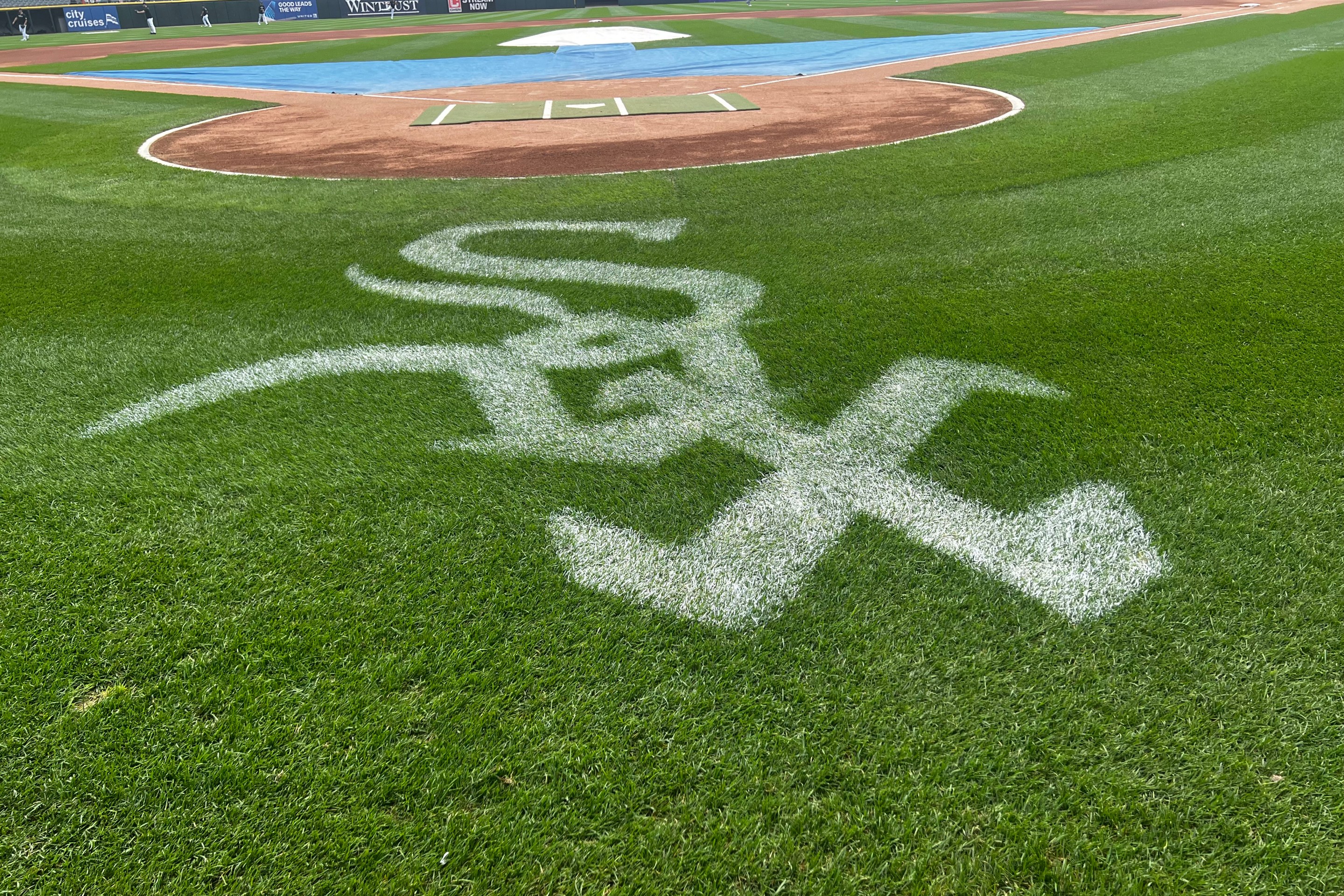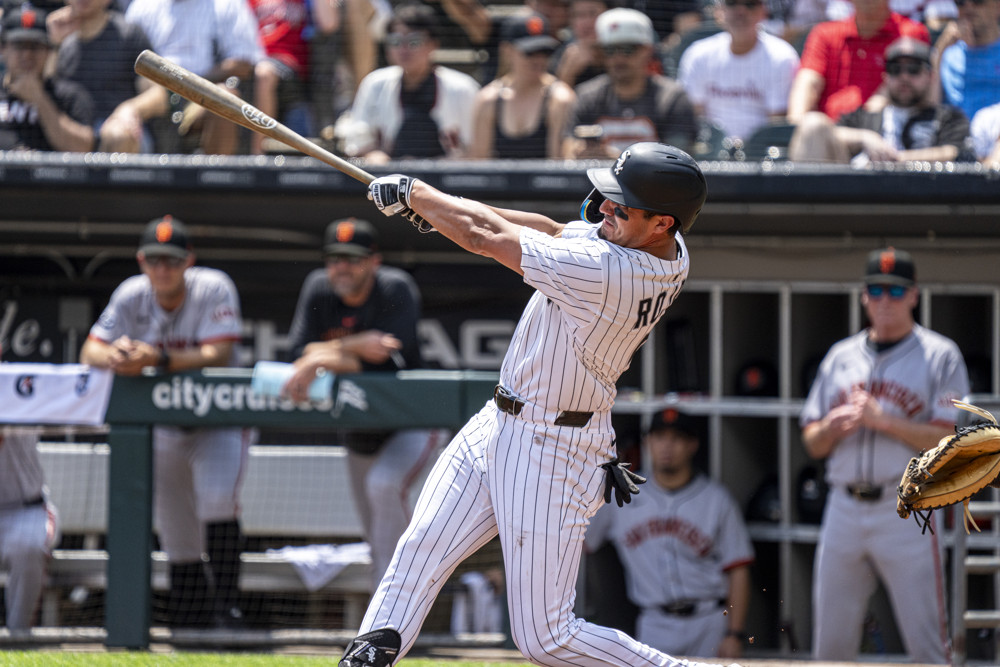Still 18 years old until next January, White Sox outfield prospect George Wolkow could probably have gotten out of the ballpark by 10:30 p.m. if he wasn't hung up by this dang postgame interview.
With another night game scheduled for the following day, even with the delay he had plenty of time to stay up late with his normal bedtime reading material: going over all the ways he had failed that day.
"I keep notes," Wolkow said. "So once the video is uploaded tonight, I'll go back and look at every pitch, from a couple of different angles. I'll try to write stuff down in my notes, basically swing decisions. We get reports back, swing decision reports so we see the Trackman zone, see where balls and strikes were called on us through the night. So I'll look at that as well, and overall just see where I made mistakes. That's part of learning the game; try to come back the next day and make an adjustment."
With the molten temperatures Wolkow's hot streaks have reached at multiple points this season, his surface-level stats of .246/.352/.450 and a 135 wRC+ would assert him as one of the most imposing hitters in the Carolina League, where the average age is almost two years older than his own. In some other existence, maybe this level of success would be the focus; perhaps one where he was coming off his freshman year in college rather than 75 games deep into his first full season in pro ball, or if he were a true late-round flier and not someone the Sox were delighted that $1 million was enough to lure him in.
Instead, Wolkow spends the tail-end of his adolescence parsing through his failures, letting them envelop him, creating a mental library of every overeager chase out of the zone. There's plenty of material.
Even with Wolkow's broadly successful season, hitting is a game of failure and he plays a particularly feast-or-famine version of it. He hits 100 strikeouts for his tenure at Kannapolis over the weekend and keeps adding, even just as he reaches 60 games played at Low-A. He finished Sunday with a strikeout-free performance in a doubleheader nightcap, and yet his K-rate remains comfortably above 40 percent for the season.
He absorbs all of it.
"Sometimes it does hurt looking at those videos, and this is actually something I talked with my mental coach about two weeks ago," Wolkow said. "Something he kind of helped instill in my brain is that I should be watching those more than I do the success. After talking it through with him about that, as much as it hurts to watch yourself, there's so much more learning and opportunity to grow from times like that than there are from just getting your A-swing off."
The aforementioned video has not been uploaded yet, but the towering teen can already readily recall RBI opportunities he spurned by waving at chase pitches. With his intellectual understanding of how he's being pitched at this level and how he must respond, he recalls the compulsion he felt to use his game-changing power to create a game-changing moment, and renders harsh judgment--time and again.
"He wants to be good, like, yesterday," said White Sox director of player development Paul Janish.
"It's a quality trait and it's a win that he goes over those reports. You can't take that for granted," said Cannon Ballers manager Patrick Leyland. "George is is very driven. He wants to be great. He wants to be great right now, and those are all positive things. But I think from time to time, he can just put too much pressure on himself."
An endearing trait to Wolkow's ambition is that it's oriented toward being a five-tool player, rather than just to be the fearsome power-hitter his frame suggests, and the thrill of such a large figure doing baseball actions spills out over the entire diamond.
"[Javier] Mogollón and George, they were both down here in the ACL and became very close, and it's one of those goofy pictures if you see those two guys standing next to each other," said Janish, since Mogollón's mass of curly hair might get him up to 5-foot-7.
Admittedly, I was not familiar with Chicago White Sox Javier Mogollon's game until today. After his home half bomb to kick off todays extended spring game I looked him up. Very good DSL numbers, 10 bombs in 47 games. Funny when 6'7" George Wolkow is waiting to celebrate at home. pic.twitter.com/4fg7Nss4eg
— TheJerryEspinoza (@JEspinoza1634) April 10, 2024
Wolkow spent the offseason completing a plyometric routine designed to coax more speed and explosive burst out of his long legs, and takes a giddy pride in a run he scored earlier in the night when his speed forced two throwing errors on the same play. He reads the outfielder positioning cards as voraciously as anything, but searches for moments to take steps in, because he loves tracking down balls over his head with long strides almost as much as he loves gunning down baserunners. That he is not yet proficient at fielding balls cleanly off the hop just creates more opportunities to throw at runners trying to snag an extra base.
The giraffe escaped from the enclosure and is eluding zookeepers aesthetic of Wolkow on the basepaths and the field only reminds that he has the physical gifts to rocket far beyond this place, while the reliable pattern of the teenager chasing offspeed pitches in chase counts reinforces that he has much to learn from being in Kannapolis. He is right where he should be, and maybe a little ahead of schedule -- depending on whose schedule we're talking about.
Like Noah Schultz with Randy Johnson, Wolkow earns physical comparison to Aaron Judge, because there are no other options that really capture what it's like to see him in person. But the implication that he has similar MVP potential is something he also embraces.
"To be compared to one of the best players, probably the best hitter in the game right now, I love that," Wolkow said. "It's like this motivation. Obviously I'm George Wolkow. I'm a young player, but for people to see and think that I have the potential to be one of the best hitters in the game someday, I try not to take that for granted and am grateful to be in this position."
If that's the standard, the problems under the hood that Wolkow spends every night staring at take on greater urgency. He ended the weekend swinging at 37 percent of pitches out of the strike zone. That's a well above-average chase rate for major leaguers (who are facing pitchers throwing significantly more tempting chase pitches) and is common territory for a brand of sluggers whose penchant for swinging holds them back from posting elite on-base rates: Jake Burger, Nicholas Castellanos, Ryan Mountcastle.
This is the more manageable issue. That Wolkow misses on a third of his swing inside the strike zone is a rate that has very little precedent for full-time success in the majors. This is the realm of Joey Gallo, rookie year Christopher Morel, or the tooled-up-but-strikeout-prone prospect disappointment of Estevan Florial. For an 18-year-old already playing at a full-season affiliate, already producing objectively plus bat speed, the White Sox do not speak about the path to Wolkow becoming a valuable major leaguer in such grave tones, not when they already see progress in cutting down the length and effort of his swing.
"The biggest thing is how quickly he's making some of those types of adjustments," Janish said. "Some of his body movements in the box have become a little bit more subtle and he's operating at not 100 percent all the time in a good way. It's understanding that he can still hit the ball 116 mph, which not everybody can do. He's going to be an interesting case study."
Wolkow's draft scout J.J. Lally once forecasted that the early years of his minor league career would be him getting "his rear end kicked over and over again." Even less enthusiastic scouts around the league say there was never a doubt that Wolkow's first exposure to pro baseball --at a very young age, at a higher level than it should be due to the elimination of short-season affiliates -- would contain difficulties, and that his real measure as a prospect will be what adjustments he makes over the offseason.
It's in that context, and with still higher expectations than everyone else that Wolkow goes home every night. And when he gets there, he goes through the reports.
"All the failure, as much as it hurts internally, it's such a great opportunity to learn and grow," Wolkow said. "I'm trying to find the positive in all those failures and rather than letting them get me down, use them as opportunities to learn and grow. I keep that building that experience, and then when the time is right, hopefully I'm prepared and ready for that next step."
